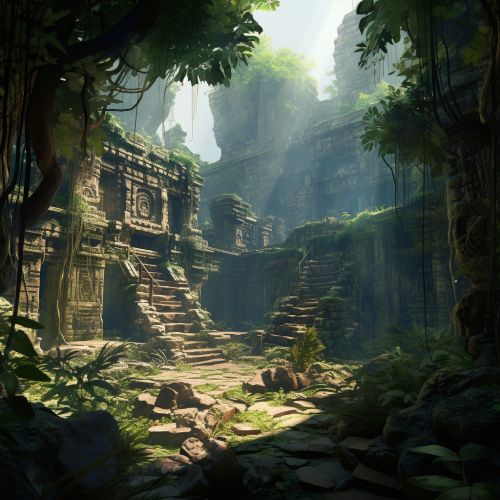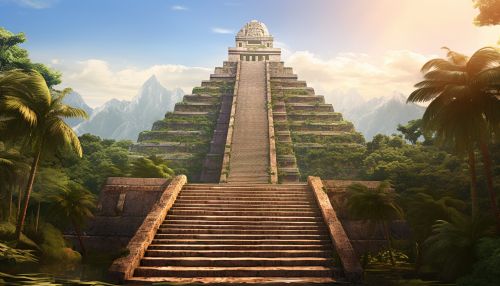Maya civilization
Origins and Development
The Maya civilization was a Mesoamerican civilization developed by the Maya peoples, and noted for its logosyllabic script—the most sophisticated and highly developed writing system in pre-Columbian Americas. The Maya civilization developed in an area that encompasses southeastern Mexico, all of Guatemala and Belize, and the western portions of Honduras and El Salvador. This region consists of the northern lowlands encompassing the Yucatán Peninsula, and the highlands of the Sierra Madre, running from the Mexican state of Chiapas, across southern Guatemala and onwards into El Salvador, and the southern lowlands of the Pacific littoral plain.


The Archaic period, prior to 2000 BC, saw the first developments in agriculture and the earliest villages. The Preclassic period (c. 2000 BC to 250 AD) saw the establishment of the first complex societies in the Maya region, and the cultivation of the staple crops of the Maya diet, including maize, beans, squashes, and chili peppers. The first Maya cities developed around 750 BC, and by 500 BC these cities possessed monumental architecture, including large temples with elaborate stucco façades. Hieroglyphic writing was being used in the Maya region by the 3rd century BC.
Classic Period
The Classic period (c. 250 AD to 900 AD) witnessed the peak of large-scale construction and urbanism, the recording of monumental inscriptions, and significant intellectual and artistic development, particularly in the northern lowlands. The Maya civilization's political system was a loose amalgamation of city-states or ajawil, ajawlel, or ajawlil, each with a rabinal, or council of elders, that would elect a ruler from a noble lineage. The city-states were independent, but they shared a common culture and ethnicity.


The Maya civilization was highly hierarchical, with a ruling elite that was legitimised by divine right and lineage. The Maya society was divided into classes, with the nobility and priesthood at the top, followed by the merchant class, and then the commoners. The lowest class was that of the slaves, who were usually war captives.
The Maya civilization was also noted for its sophisticated and highly complex calendrical systems, and the Maya calendar is still in use today. The Maya also made significant advances in astronomy and mathematics, including the use of the concept of zero.
Post-Classic Period and Decline
The Postclassic period (c. 900 AD to 1539 AD) saw the decline of the Maya civilization, with the southern and central lowlands bearing the brunt of this decline. This period was characterised by significant urban and cultural change, with the abandonment of the great Classic cities, and a shift towards militarism. The reasons for this decline are still debated, but it is likely that a combination of overpopulation, environmental degradation, warfare, and shifting trade routes were contributing factors.
The Maya civilization did not disappear entirely following the arrival of the Spanish in the 16th century, and many Maya communities continue to inhabit the region today, maintaining a distinct cultural identity and preserving many aspects of their ancient civilization.
